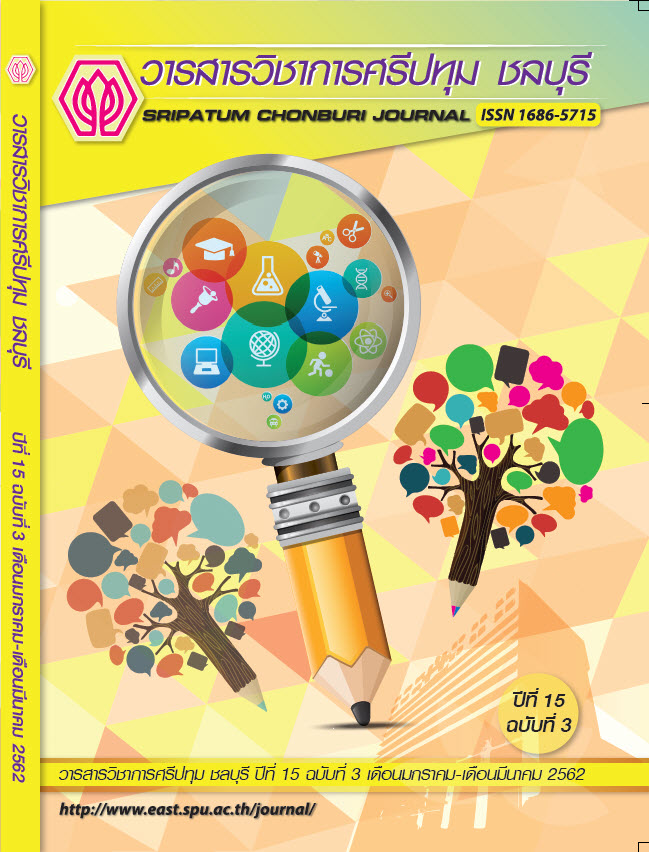A DESIGN AND DEVELOPMENT OF ONLINE SCHOLARLY ACTIVITY MANAGEMENT SYSTEM USING HUMAN-COMPUTER INTERACTION AND AUTOMATIC EXPERT ASSIGNMENT
Keywords:
online scholarly activity management system, content management system, AEA, SAMSAbstract
The purposes of this research were to design and develop an online academic activity management system using Human-Computer Interaction and Automatic Expert Assignment, to explore system performance, and to study users’ satisfaction. The system was implemented according to the morals ethics and core values of the Thailand Contest in 2016 (Methai 2016). The research sample was obtained by purposive sampling method. The sample consisted of 86 participants from Methai, 2016. Research tools included online academic activities management system, system performance and satisfaction evaluation. The system was developed in CMS platform including 7 functions; Communication, Register, Payment Notification, Automatic Expert Assignment, Committee Review, Search Engine, and Administration Control. The Automatic Expert Assignment (AEA) function is a model matching committees with articles. The researcher developed an algorithm using the Fuzzy C-Means method. The developed AEA algorithm was suitable for the expertise of committees.
The results of the research showed that the efficiency of the experts’ evaluation was at a high level ( = 4.40, SD = 0.34). The satisfaction of the users was at a high level (
= 4.13, SD = 0.48), that of the committees was at the highest level (
= 4.51, SD = 0.43) and that of the administrators was at a high level (
= 3.88, SD = 0.74).
References
พฤกษ์ คงบุญ, วรปภา อารีราษฎร์ และเผด็จ พรหมสาขา ณ สกลนคร. (2558). การพัฒนาระบบการบริหาร จัดการงานประชุมวิชาการ (ออนไลน์). เข้าถึงได้จาก: http://ncteched.org/NCTechEd08/ncteched08SIT03.pdf [2560, 8 มิถุนายน].
ศศิพันธ์ นิตยะประภา. (2558). การใช้งานได้ของเว็บไซต์. วารสารเทคโนโลยีสารสนเทศ มหาวิทยาลัย หอการค้าไทย, 11(2), หน้า 70-87.
เศรษฐชัย ชัยสนิท และเตชา อัศวสิทธิถาวร. (2549). การวิเคราะห์และออกแบบระบบ. กรุงเทพฯ: วัง อักษร.
Haroon Shakirat Oluwatosin. (2014). Client-server model. IOSR Journal of Computer Engineering (IOSR-JCE), 16(1), pp. 67-71.
Karray, F., et al. (2008). Human-computer interaction: Overview on state of the art. International Journal on Smart Sensing and Intelligent Systems, 1(1), pp. 137-159.
Mingoti, S. A., & Lima, Joab O. (2006). Comparing SOM neural network with Fuzzy C-means, K-means and traditional hierarchical clustering algorithms. European Journal of Operational Research, 174(3), pp. 1742-1759.
Ninoriya, S., Chawan, P. M., & Meshram, B. B. (2011). CMS, LMS and LCMS For eLearning. IJCSI International Journal of Computer Science lssues, 8(2), pp. 644-647.
Downloads
Published
Issue
Section
License
บทความทุกบทความเป็นลิขสิทธิ์ของวารสารวิชาการศรีปทุม ชลบุรี



